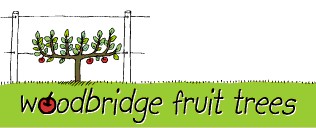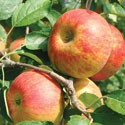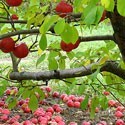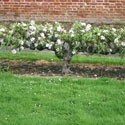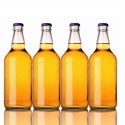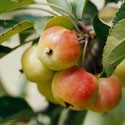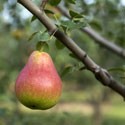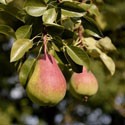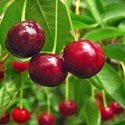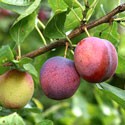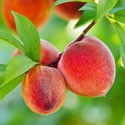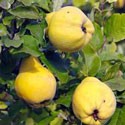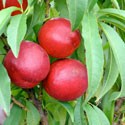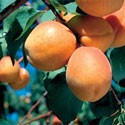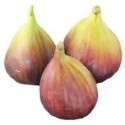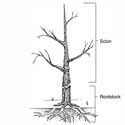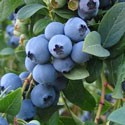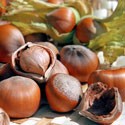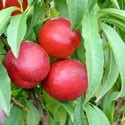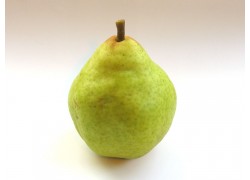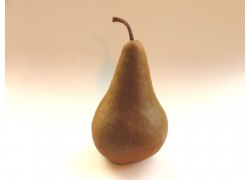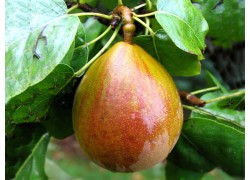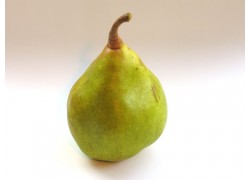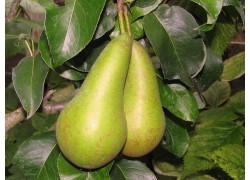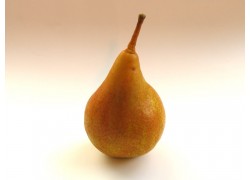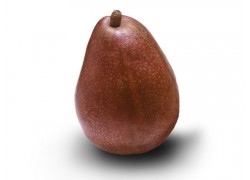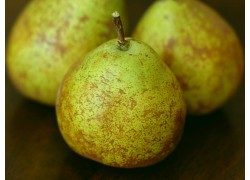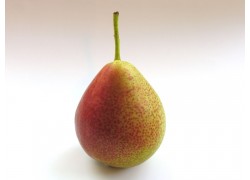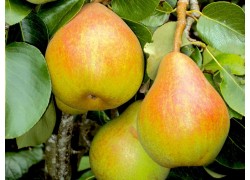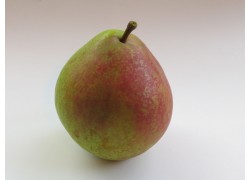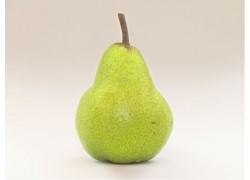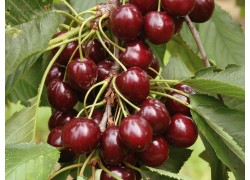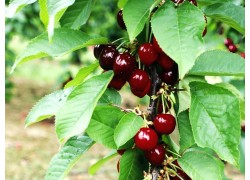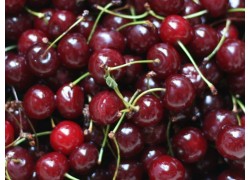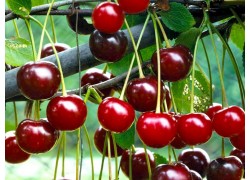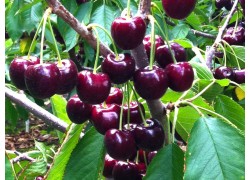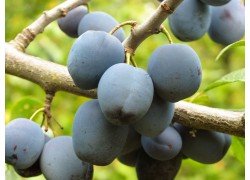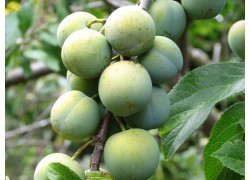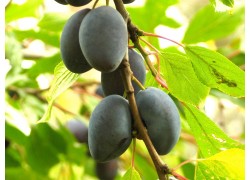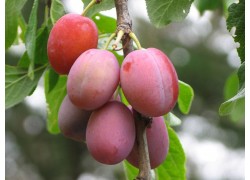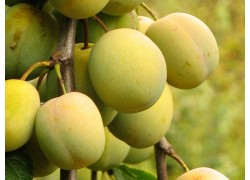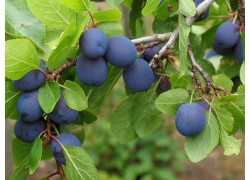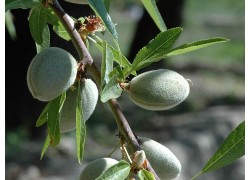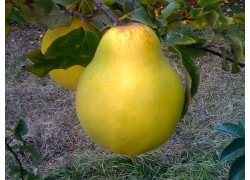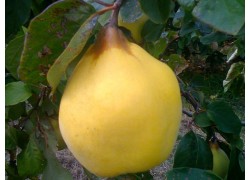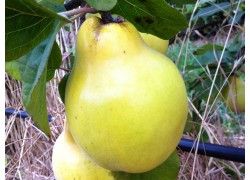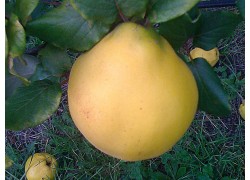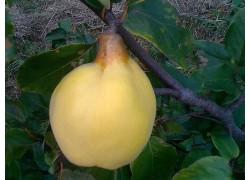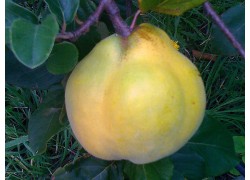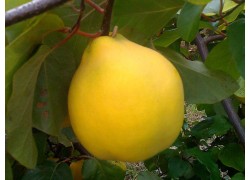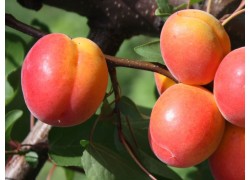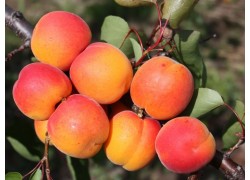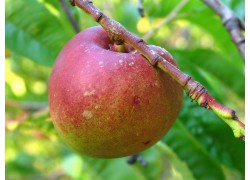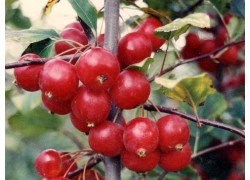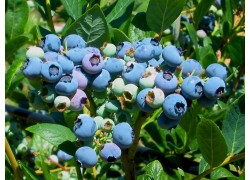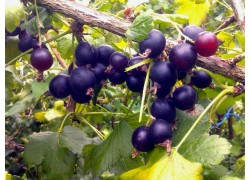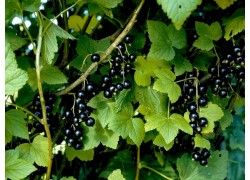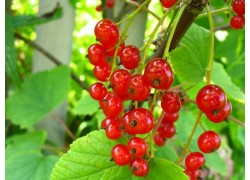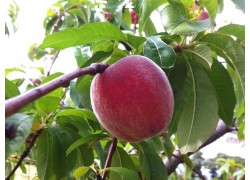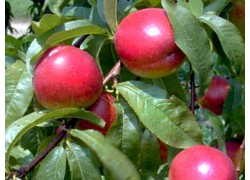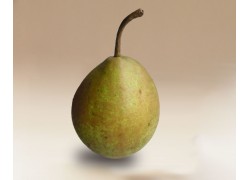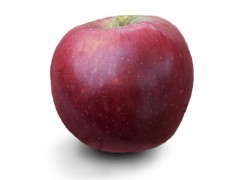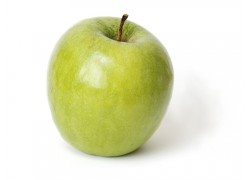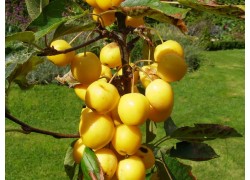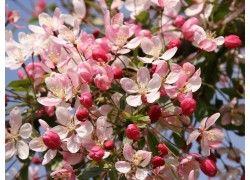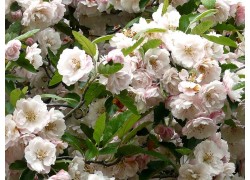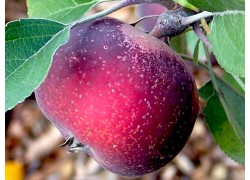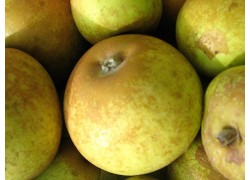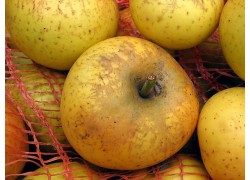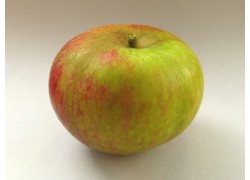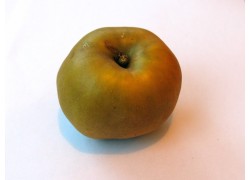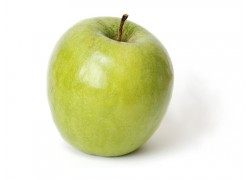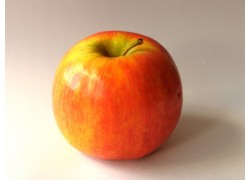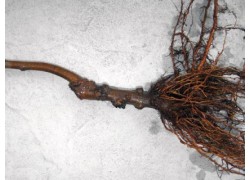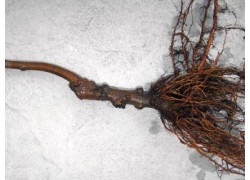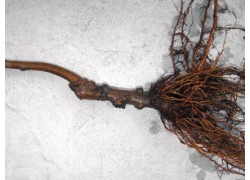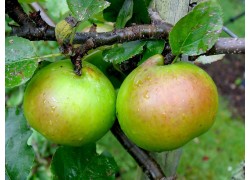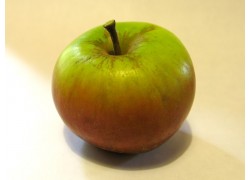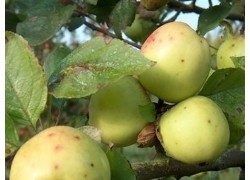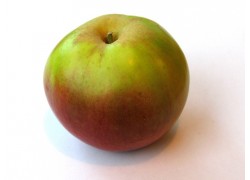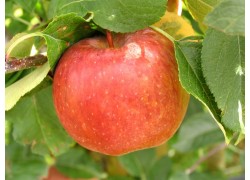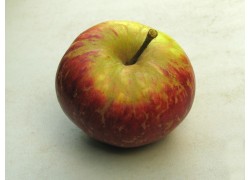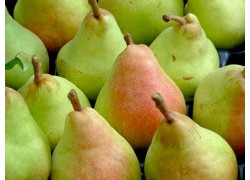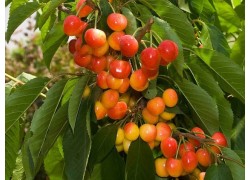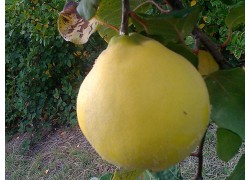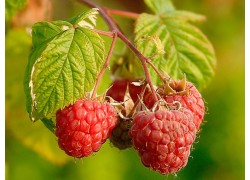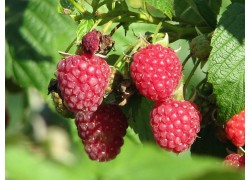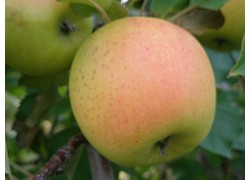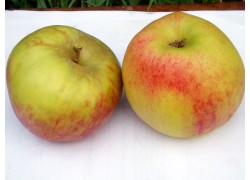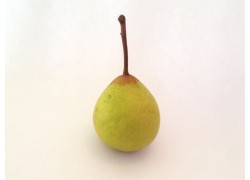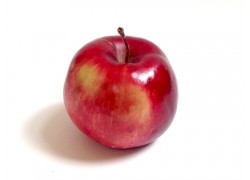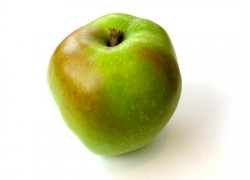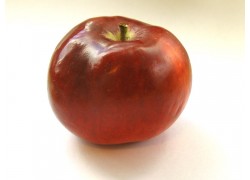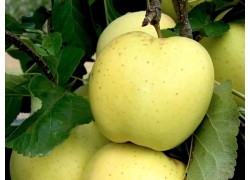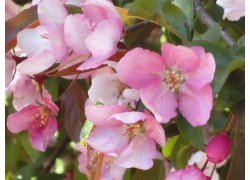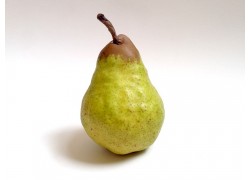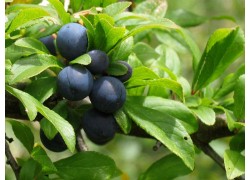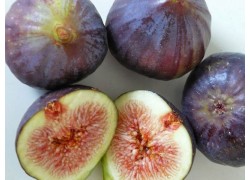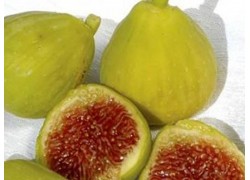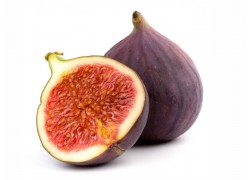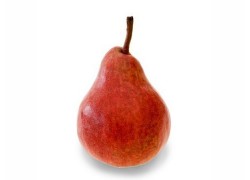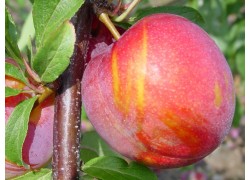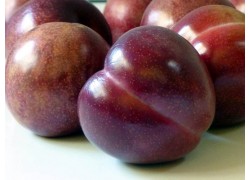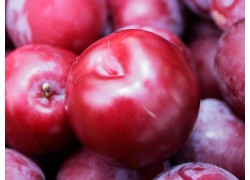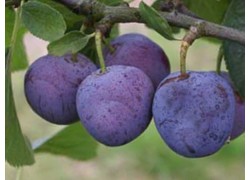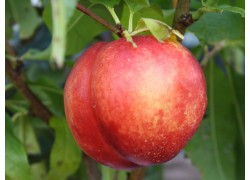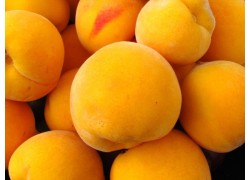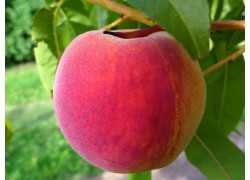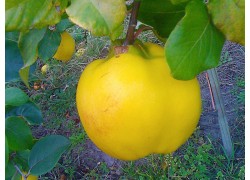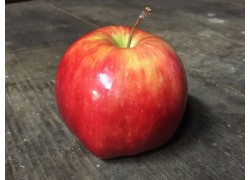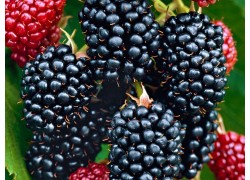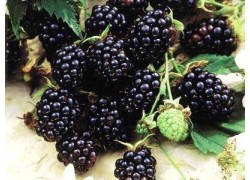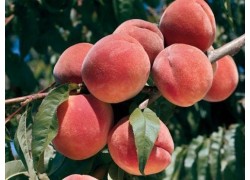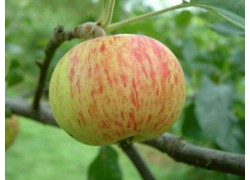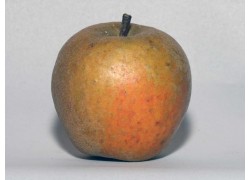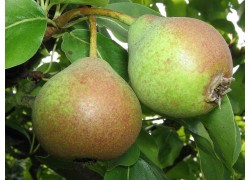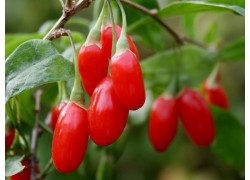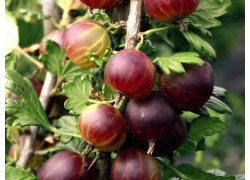No products
Filter
Our range of dwarfing and non-dwarfing fruit trees, nuts, berries.
Fruit Trees There are 250 products.
Subcategories
-
Dwarf Apples
Heritage apple varieties on DWARF rootstock. These apples are ideal for back yards, small orchards, espaliers or anywhere where space is tight. Varieties ripen from Christmas to July providing 6 months of fruit. Wee included some more recent varieties as well as historic ones. There are excellent eating apples, cookers, big, small, common and unusual. Something for every occasion.
-
Semi-dwarfing Apples
Heritage apple varieties on SEMI-DWARFING rootstock. These apples are ideal a free-standing tree, rather than espaliering. They are a little more vigorous than our dwarfing trees.
-
Stepover Apples
Step-over apple trees on EXTRA-DWARFING rootstocks. These highly sought-after trees can make productive hedges half a metre in height. Ideal for edging garden and vegetable beds, or a striking ornamental hedge. We tend to select later ripening varieties so that the fruit are hanging after the leaves have fallen. See our article on step-overs for more information.
-
Cider Apples
Cider apple trees on SEMI-DWARFING rootstocks. These are a selection of specialty cider varieties from the English and French cider traditions. They make superior cider (in the right hands!) and are to the cider world as to the Pinot Noir or Chardonnay are to the world of wine.
-
Crab Apples
Crab apple trees on SEMI-DWARFING rootstocks. These are considered as ornamentals, but can be used in juicing to offset the sweeter apple or pear. Highly regarded as pollinators for apple varieties because of their prolific flowering.
-
Dwarf Pears
Pear trees on DWARFING rootstocks. Dwarfing forms allow these pears to bear much earlier and make more manageable trees than the huge old pear trees seen on old farms. "Pears for your heirs" was the old adage pointing to their longevity, slowness of growth and bearing, and eventual large sized tree. The French (and Belgians) have been responsible for bringing pear culture to it's peak in the 1700s.
-
Perry Pears
Select from our range of Perry pears on Dwarfing rootstocks.
-
Cherries
Cherry trees on DWARFING rootstocks. The sweet cherry varieties we grow have been developed from the European bird cherry (Prunus avium), while the sour cherries (which are still tangy as well as sweet) have been developed from Prunus cerasus, a wild cherry from Asia. Cherries definitely need protection from birds and many growing methods have been developed to accommodate this eg. espalier, spanish bush or fans so that they can be netted.
-
Plums
Plum trees on NON-DWARFING rootstocks. The so-called European Plums we sell were introduced into Europe from Syria and Persia and are the product of long selection and development over the last 1000 years. Plums have pale greenish yellow flesh and rich sugary flavour, ripening in February. Generally two varieties are needed for cross pollination, although there are some that are self fertile. Esplaiering these shuold be done on a fan shape only.
-
Peach
Old style peaches on non-dwarfing rootstock. These are best grown as free-standing trees to 3-4m but can be espaliered in a FAN shape effectively keeping it below 1.8m.
-
Quinces
Quince trees on DWARFING rootstocks. Closely related to the pear, quinces are attractive trees, and the fruit wonderfully aromatic - treasured for cooking, tarts, preserves and jellies.
-
Nectarine
Old style Nectarines on non-dwarfing rootstock. These are best grown as free-standing trees to 3-4m but can be espaliered in a FAN shape effectively keeping it below 1.8m.
-
Apricots
Apricot trees on SEMI-DWARFING rootstocks. These are best grown as free-standing trees to 3-4m but can be espaliered in a FAN shape effectively keeping it below 1.8m. The Moorpark produces a smaller tree, and can be kept smaller on an espalier as well. Medlars produce small trees or can be espaliered easily to 1.5m.
-
Figs
Figs on non-dwarfing rootstocks. Knows for their sensuous fruit both fresh and dried. Figs like long hot summers but not too dry, with well drained soils, preferrably out of the wind. They tolerate being potted. -
Rootstocks
Rootstocks are used for grafting and budding onto. If you know or want to learn how to graft or bud, you can propagate yourself. This year we offer a handful of rootstocks, but sorry no quince or pears.
-
Berries
A selection of raspberries, blackberries, logans, blueberries, currants and other edible berries for the garden.
-
Nut Trees
Hazelnuts and almonds. Hazels are great for mass hedging, but can be trained into a small tree. Almond pollination can be tricky but this self-fertile one allows you to grow plenty with just one tree.
-
Dwarf Stone Fruit
Dwarfing Stone fruit - Peaches, Apricots, Plums, Nectarines. Idea for small espaliers or pots.
-
Williams Ripens: February - March
An attractive large yellow pear. Juicy, tasty soft flesh and best eaten off the trees as it stores less well as other varieties. Is partially self fertile, but will crop better if near another variety of our pears.
$32.50In Stock -
Beurre Bosc Ripens: March
A well known pear - distinctly covered in a deep brown beautiful russet. It has a long shape, often with a gentle curve, and a rich creamy grainy flesh. Very high quality, lasts well, ripens late. Pollination by any other variety of our pears.
$32.50Out of stock -
Beurre Hardy Ripens: March
This late ripening pear originates in the Anjou region of France where many of our best pears come from. It's a medium sized roundish pear with a deep orangy brown skin with a fair amount of russet. The yellowish-white flesh is fine, juicy, and of excellent flavour. Bears heavily and crops regularly. An instant favourite! Cooks well. Pollination by any...
$42.50In Stock -
Beurre Superfin Ripens: March
This little-know pear is a delight to eat. Medium sized fruit, with crisp firm flesh, pleasant light-green skin and a classic pear shape. Very juicy, but not over sweet. An instant favourite. Pollination by any other variety of our pears.
$32.50In Stock -
Conference Ripens: March - April
The most popular commercial variety in UK, but uncommon in Australia. Long thin green fruits with some russet, delicate melting flesh when allowed to ripen properly. The key is to pick them when they are still firm and then ripen them on a window sill for 3-4 weeks. Ripen mid season, late March. Keeps well if put into a cool place.
$32.50Out of stock -
Durondeau Ripens: February - March
A reddish brown pear with skin covered in a soft russet all over. A classic pear shape. A high quality fruit eaten fresh - just a stunning flavour and texture. Leaves turn attractive red in the autumn when the fruit ripen. Originated in Belgium 1811. Pollination by any other variety of our pears.
$42.50Out of stock -
Beurre D'Anjou Ripens: April
This late ripening pear originates in the Anjou region of France where many of our best pears come from. It's a medium sized longish shaped pear with a deep reddish-purplish skin and prominent russet patches. Quite stunning to see them hang amongst the green leaves. It has yellowish white juicy flesh thats highly flavoured, and bears heavily and regularly.
$42.50Product available with different options -
Bonne De Maline Ripens: March - April
A pear originating in Belgium in the 1820's, also known as Winter Nellis. Bears smallish rounded fruit, greenish brown with a slightly russeted skin. A fine rich buttery juicy yellowish flesh, with lovely flavour. Keeps well, ripens late. Pollination by any other variety of our pears.
$32.50In Stock -
Corella Ripens: April
An attractive pear, yellow skin with an orange / red blush on the sunny side. Firm flesh, sweet and juicy. Stores well. Suitable for fairly low chill conditions. Pollination by any other variety of our pears.
$32.50In Stock -
Doyenne Du Comice Ripens: April
This translates as 'Best on the market' and it really lives up to that name - on of the most wonderful pears that we sell. From France in the 1850's. Skin greenish yellow with an orange cheek when ripe. Medium to large fruit, slightly knobbly and perhaps a little russet and a long stem. Matures fairly late. Pollination by any other variety of our pears.
$42.50In Stock -
Flemish Beauty Ripens: March
A Belgian pear from the 1820's. Rounding shape with green almost speckled skin developing an attractive red/ pink blush on the sunny side. Flesh white, firm, grained and juicy, with a great flavour. Is partially self fertile, but will crop better if near another variety of our pears.
$32.50In Stock -
Josephine Ripens: April - May
A smaller pear with a unique melting soft flesh beneath a fine glossy light green skin covered in a little russet. Memorable texture once tasted! From Belgium 1830, late maturing. Pollination by any other variety of our pears.
$32.50In Stock -
Simone Ripens: January - February
Simone is one of the new varieties of cherries that have come out of breeding programs in south-west Canada. The fruit is large - almost like a small plum, black, succulent and tasty. Quite resistant (more or less) to splitting when ripe. Self pollinating although having another variety will increase yield. Ripen from mid December to late January.
$39.50In Stock -
Stella Ripens: January
A hugely popular variety, again from a breeding program in south-west Canada 1968. Large fruit almost the size of a small plum, dark purple or black skin, succulent and sweet. Quite resistant to splitting when ripe. Self pollinating although having another variety will increase yield. Has a reputation for pollinating most other cherries, so a must-have...
$39.50In Stock -
Kentish Ripens: January
Are the very early sour cherries esteemed for preserves and jam. They are bright red with very pale coloured flesh and the trees are extremely tough, productive and prolific. Self fertile.
$39.50In Stock -
Morello Ripens: January
Morello is a sour cherry prized for preserving, cooking with and making Glacé cherries. The Polish love to lace them with Vodka. They have smallish dark fruit with dark flesh, and a rich slightly almondy flavour. Sour cherries tend to be more disease resistant than sweet cherries, but the birds will still get them! Self fertile.
$39.50In Stock -
Lapin Ripens: January - February
Lapin is a cross between Stella and Van, and ripens a bit later in the season. From Canada in the 1960’s. Large plump fruit - almost like a small plum, black, succulent, tasty and sweet. Quite resistant (more or less) to splitting when ripe. Self pollinating though it's better to plant two just in case (and extend the season).
$39.50In Stock -
Angelina Ripens: February
This is the classic purple highly flavoured European Plum. Originated in France but has been widely spread around the world. It's purple in colour and has a rich flavour that cooks superbly and is great eaten fresh. Ripens February.
$39.50In Stock -
Greengage Ripens: February
A small round greenish yellow plum with intense flavour (the Cox's Orange of the plums) tends to crop incredibly heavily and then has a year's rest. Great for stewing, eating and bottling. Considered partially self fertile but having another plum (eg Coe's Golden Drop) will increase yield.
$39.50Out of stock -
Prune Splendour Ripens: February
An American prune with rich aromatic flavour. Luther Burbank in one of his many breeding programmes about 1905 turned his attention to breeding a better prune. Splendour is a cross between d'Agen and a Hungarian prune. It's long in shape, dark purple with a yellow flesh, and sweet to taste. Estimated 11% sugar (parent d'Agen has about 8%).
$39.50In Stock -
Victoria Ripens: February
This plum is most fondly remembered by English immigrants. Its skin is pink, the flesh a clear yellow and the stone slips. An amazing producer - needing supports under the ladened branches when almost ripe, to prevent limbs breaking. Considered self-fertile bue will crop better near another European plum.
$39.50In Stock -
Coe's Golden Drop Ripens: February - March
This famous old English plum has a clear yellow skin and gorgeous yellow flesh with a sweet melting flavour. Amazing eaten (juicy!), and good for stewing and jams. Pollinated by Damson, Angelina, Greengage. Ripens late February
$39.50In Stock -
Damson Ripens: March
These are having a renaissance at present because of their qualities as a cooked fruit for jams, sauces and preserves. They are actually tiny plums about the size of a large grape. When cooked, they develop a deep rich flavour unequalled in the plum family. A small tough tree with some spikes, but not much cherry slug damage. Heavy crop during February...
$39.50Out of stock -
Almond Ripens: April - May
This sweet flavoursome soft shelled almond is self-fertile, producing a tree about 3m high. A very attractive tree covered in single white flowers just as the leaves emerge in spring. It likes it hot in summer, but well drained soil and enough watering during the summer growth. It needs some winter chill to pollinate but will not tolerate frost. Expect...
$42.50In Stock -
Champion Ripens: March - April
A quince originally from the USA and a very popular variety in Australia. A very reliable and prolific quince producing large amounts of rather squat pear shaped fruit. Cooks to pale pink. Mid season.
$39.50In Stock -
De Vrajna Ripens: March
Also known as Berezki from Serbia - very attractive longish pear shaped fruits. Smooth pale yellow skin and very aromatic flesh. Flowers are white, cooks to a pink. Matures early. Sorry, we only had a handfull of these for sale.
$39.50Product available with different options -
Pineapple Ripens: March - April
Developed by Luther Burbank in California USA in about 1900. It has a slight pineapple flavour, bears prolifically and has a nice pear shaped with short, stumpy neck and bears medium to late. Cooks to pale pink.
$39.50Only a few left -
Powells Prize Ripens: March - April
This is thought to be an Australian quince. Large handsome leaves, smallish pear shaped fruit that cooks to a pink. Matures early - mid season.
$39.50In Stock -
Smyrna Ripens: April
A Turkish quince. Produces a spreading tree, with large leaves. The fruit are large, long and pear-like in shape. Light lemon in colour, very aromatic and firm when cooked, to pale pink. Matures here early April. White flowers with a faint trace of pink.
$39.50In Stock -
Van De Man Ripens: April
A quince with a very squat shape and abeautiful bright yellow colour. Cooks to an orange pulp with no grit and a great aromatic spicy flavour. Matures late and has the palest pink flowers. Yet another Luther Burbank selection from California about 1900.
$39.50In Stock -
De Bourgeaut Ripens: April
A French variety with large pear shaped fruit. The skin is downy and the flesh cooks firmly to a deep pink, with a rich flavour. Beautiful pale pink flowers. Matures late.
$39.50In Stock -
Goldrich Ripens: January - February
A Canadian apricot that produces a large tree with a bountiful number of large superior succulent fruit. Orange with a red cheek. They may grow on a trellis, but will want to grow larger than a Moorpark. Requires a Rival or Moorpark for pollination.
$39.50Out of stock -
Moorpark Ripens: January - February
Our favourite well-know old-style apricot with great flavour. Unlike the more modern varieties, the fruit are a little smaller but the flavour more intense. A classic apricot colour - orange with a red blush on the sunny side. Does well in dry summers. Makes a compact tree and is self fertile.
$39.50In Stock -
Goldmine Nectarine Ripens: February - March
This is the old white-fleshed Nectarine, ripens late February-March here and has intense rich flavour, but most important of all is fairly resistant to leaf curl. In good conditions it will rewards you with a huge amount of fruit,
$39.50In Stock -
Gorgeous Crab Ripens: March - April
A small tree to 4m with an amazing crop of 2cm round clusters of crimson red fruits. Great in flower arrangements and jelly. Originating in NZ.
$39.50In Stock -
Blueberry Blue Rose Ripens: December
A blueberry with particularly large fruit, starting to ripen as early as christmas and cropping through until late summer. Blueberries in general produce a shrub with new branches suckering up from the base. They require chill, and leaves turn a lovely crimson colour in Autum. The fruit are prized eaten fresh, and can be stored well frozen or cooked in...
$21.00In Stock -
Jostaberry Ripens: February - March
Jostaberries are a cross between a black currant and a goosberry. Size of the fruit is in between it's parents and the flavour is also a mixture. Sweet but tangy, this fruit is great eaten fresh but ideal for jam, pies and preserved. The bush is thornless, growing up to 1.5m, can be easily trained onto a trellis. Bird protection essential!
$16.00In Stock -
Blackcurrant Ripens: February - March
A superb rich flavoured dark berry, famous for making cordial, but also wonderful in jams, pies, muffins, cakes, wines, syrups. Bird protection essential!
$16.00In Stock -
Redcurrant Ripens: February - March
Large translucent ruby red berries ripen on bunches and can be easily tickled off when ripe. Crop heavily and over a long season, redcurrants have a spritely balance of acid and sweet. can be eaten fresh and used in drinks, jams, pies. Bird protection essential!
$16.00In Stock -
Anzac Peach Ripens: January - February
This Australian peach is about 100 years old! White flesh with a ruby red skin. Amazingly sweet, producing abundant fruit in mid January for about a month. Doesnt seem to be to susceptible to curly leaf. Self fertile.
$39.50In Stock -
Fantasia Nectarine Ripens: February
A yellow fleshed nectarine, freestone that ripens in February. Good flavour and a firm flesh. Lovely orange to red skin, if these are looked after and fed and watered during summer, the fruit can grow quite large - bigger than a tennis ball. Self-fertile.
$39.50In Stock -
Winter Cole Ripens: April
A seedling from Bonne de Malines (Winter Nelis) raised by JC Cole in Richmond Victoria in 1880s. Smaller green partially russeted fruit. Tender sweet juicy flesh with good flavour. Ripens later in the season, can store well. Pollination is from another one of our pears.
$42.50In Stock -
Lady Williams Step-Over Ripens: June - July
This is a true Australian Federation apple believed to be the daughter of Rokewood and Granny Smith both of which are famous old Australian varieties. It is a large apple, maturing July or even later and keeps extremely well. Brilliant red purple skin, longish conical fruit with excellent flavour.
$42.50In Stock -
Granny Smith Step-over Ripens: June - July
This famous Australian apple should be know my most. A very green apple, large with prominent dots on the skin. The white flesh is very crisp, juicy and acid. Unfortunately the public seldom have a chance to eat fully mature Granny's straight off the tree as they are picked in March and cool stored. They hang very well on the tree after the leaves have
$42.50In Stock -
Golden Hornet Ripens: March - April
This crab produces abundance of small yellow fruit in clusters during Autumn and into winter. Springtime produces a mass of white flower. Stunning crab. An excellent pollinator for all domestic apple species.
$39.50In Stock -
Malus Floribunda Ripens: March - April
Forms a spreading densly branched tree, producing amazing masses of reddish pink blossom in Spring. During Autumn, produces a lot of small red fruit. This crab is planted as a focal point for its bloom but the fruit can be used in cooking.
$39.50In Stock -
Malus Ioensis "plena"
A flowering crab apple that rarely bears fruit. Produces masses of double pinky-white flowers during springtime. The leaves turn beautiful reds in Autumn.
$39.50In Stock -
King David Ripens: April - May
Dating back to Arkansas 1890's, this is thought to be a cross between Jonathon and Black Arkansas or Winesap. Quite a spicy / tart apple, similar to a winesap - ideal for cider. Very juicy. Red to dark black in colour, ripens late.
$29.50Out of stock -
Brown Snout Ripens: April - May
Originating in Hereford, UK in the mid 1800's. A late medium bitter-sweet variety, high yeilding.
$29.50Out of stock -
Sweet Coppin Ripens: March
Originally from Devon, UK. Makes sweet cider, or for balancing with bitter / sharp varieties. Ripen in March.
$29.50Out of stock -
Cox's Orange Pippin Semi-dwarfing Ripens: February - March
This must be the world's most revered apple, originating in Buckinghamshire England in 1825, thought to be an offspring of Ribston Pippin. An attractive strip yellow/orange skin on a yellow background with the charateristic cox's russet around the collar. Crisp juicy flesh when ripe, with a richness that is difficult to describe except it has all
$39.50In Stock -
Fenouillet Gris Dwarfing Ripens: March - April
This is the most unusual apple we grow - it's as far from the supermarket stereotype as you can get. Originating in France as far back in the 1600's, a small reddish orange blocky apple almost totally russetted. The flesh is deep yellow and has a distinctly delicious anise flavour. No apple collection is complete without this one.
$39.50In Stock -
Granny Smith Semi-dwarfing Ripens: June - July
This famous apple originated as a chance seedling in the back garden of a Mrs. Mary Anne Smith of Ryde near Sydney around 1860. It's thought to be the offspring of a variety called 'French Crab' which it closely resembles. Granny's are large and very green with prominent dots on the skin. The white flesh is very crisp, juicy and acid. Unfortunately the...
$39.50In Stock -
Pink Lady Semi-dwarfing Ripens: June - July
Most people will know Pink Lady because of it's popularity Australia wide. It's has fairly large fruit with excellent appearance, pink to pale red blush over a yellow background. Nicely flavoured pale yellow firm flesh. Matures very late and stores very well. Presently Australia's most famous apple: 3rd generation Australian, starting from Rokewood -->...
$39.50In Stock -
Apple Rootstocks (Dwarfing M26)
A dwarfing rootstock for growing and propagating apples and crabapples onto. These have been grown on for one year after harvesting from a stoolbed, so have established root systems.
$10.00 $13.00Reduced price!In Stock -
Apple Rootstocks (Semi-Dwarfing M111)
A semi-dwarfing rootstock for growing and propagating apples and crabapple. These have been grown on for one year after harvesting from a stoolbed, so have established root systems.
$10.00 $13.00Reduced price!In Stock -
Cherry Rootstocks (Stallion)
Stallion rootstock are for for growing and propagating cherries only. These have been grown on for one year after harvesting from a stoolbed, so have established root systems. Trees grow up to 3m or tolerate being espaliered to 1.5m.
$10.00 $13.00Reduced price!In Stock -
Bramley's Seedling Semi-dwarfing Ripens: March - April
England's most popular cooking apple - and for good reason - when cooked produces a puree that is unsurpassable both in texture and flavour. It has a firm tart acid flesh, with green skin flushed brownish-red on the sunny side. The fruit are large in size with a slightly irregular shape. Stores very well.
$39.50In Stock -
Sturmer Semi-dwarfing Ripens: June - July
Feedback from our customers rates Sturmer as one of the most satisfying apples to grow. It's extremely late, very acid, and is really a great all rounder - eaten fresh, cooked, juiced or made into cider. By modern standards it's no beauty; with orange/yellow russeted skin, a dense yellowish flesh, and medium in size. It's a very heavy cropper and stores...
$39.50In Stock -
Michelin Ripens: March
A medium sized yellow-green fruit ripening mid-season (March). A bitter-sweet variety, originating in Yvetot, France. Produces medium cider, and often used for blending. Partially self-fertile.
$29.50In Stock -
Ida Red Step-Over Ripens: May - June
A very handsome late ripening, deep red apple - a cross between Jonathan and Wagener from Idaho USA in 1942. Crisp flesh and an uncomplicated sweet / acid tasting flesh. Great cooked as well as eaten fresh and stores exceptionally well.
$42.50In Stock -
Fuji Step-Over Ripens: June - July
A well known variety developed in Japan from it's parent Red Delicious. An attractive red skin, crisp yellowish flesh, uncomplicated deep sweet flavour and is always predictably juicy. Medium to large sized fruit. Fuji stores well - improving in quality and flavour. A thoroughly modern apple, and one of the latest maturing varieties. Suitable for...
$42.50In Stock -
Kidd's Orange Red Step-Over Ripens: March - April
An excellent eating apple, no surprise due to it's parentage: Cox's Orange and Red Delicious, developed in New Zealand by John Kidd in 1924. The skin is a flushed orange red with a slight russet while the flesh is aromatic, crisp, sweet and creamy white. Always rates very high in apple tasting events. It stores well. As we grow it on other rootstocks, be...
$42.50In Stock -
Glou Morceau Ripens: April
A small to medium pear, with a delightful light melting flesh, juicy and fine. The skin is light green in colour without russet with a little orange blush on the sunny side, but no russett. Reliable cropper. Also called Beurre d'Hardenpont after a Belgian priest around 1750, and earned the name Glou Morceau (translates Dainty Morsel) on it's way to...
$32.50In Stock -
Rainier Ripens: January
A pale fleshed cherry, plump and creamy sweet. Developed in 1952 as a cross between Van and Bing in Washington USA. A most amazing flavour, these almost translucent beauties are considered the cream of the crop. The fruit need to be carefully handled to avoid bruising, and like all cherries need netting to protect from birds. Pollinated by Van, Bing,...
$42.50In Stock -
Appleshaped Ripens: March - April
A heavily bearing with fruit curiously the shape of an apple. The tree is vigorous, spreading, small leaved and productive. Possibly from USA.
$39.50In Stock -
Raspberry Chilcotin Pack Ripens: December
A summer fruiting raspberry, heavy cropping with good quality fruit. Generally start ripening in December for 4 weeks and a small crop later in early Autumn. Used for eating fresh, jams, frozen. 10 Canes per bundle. Regarded as one plant for shipping purposes.
$34.00In Stock -
Raspberry Heritage Pack Ripens: March - April
An autumn fruiting raspberry, large good quality fruit and high yield. Used for extending the fruiting season. Used for eating fresh, jams, frozen. 10 canes per bundle. Regarded as one plant for shipping purposes.
$34.00In Stock -
Raspberry Autumn Bliss Pack Ripens: March - April
An Autumn fruiting variety. Red, plump good quality fruit. Used for eating fresh, jams, frozen. 10 Canes per bundle. See our article on growing raspberries.
$37.00In Stock -
Mutsu Dwarfing Ripens: May - June
Fruit tend to be green all over, medium to large in size and very heavy regular cropping. Mutsu originated in Japan in the 1940's, an offspring of Golden Delicious. The flesh is crunch and extremely juicy with a sprightly (some say fruit salad) flavour that's unique. An apple that seems to satisfy all tastes, as we're always getting good feedback about it...
$39.50Out of stock -
Baldwin Dwarfing Ripens: April - May
A large handsome red apple with yellow flesh – crisp, crunchy, juicy with a hint of spice. Originating as a seedling from Massachusetts around 1750’s, it rose temporarily to commercial success in the early 1900’s in the USA. This apple always attracts keen interest at our apple tastings.
$39.50In Stock -
Dearbourne's Seedling Ripens: February - March
A smallish pear with a classic pear shape, light green to pale yellow with tiny russet dots when ripe. Tends to bear early and quite prolificly. Flesh is high quality, smooth sweet and juicy. Unknown origin. Also called Dearborn Seedling. Pollination by any other variety of our pears.
$32.50In Stock -
Pomme de Neige Step-Over Ripens: March - April
Also known as Snow apple, Lady in the Snow, Fameuse, Chimney Apple and about 20 other names which reflects its popularity and how widely distributed this variety is. Originated around 1730 in Quebec, Canada an offspring of McIntosh. The attractive smallish fruit have red sometimes striped skin on a background of pale red and green.
$42.50In Stock -
Catshead Step-Over Ripens: April - May
This is a majestic apple - large dense dark green apple with flattish sides. Often a little red develops on the sunny side. White flesh. Known in England as far back as the 1600's. Good eaten fresh but comes into itself as a cooker (a costard) that develops a wonderful spicy flavoured pulp.
$42.50In Stock -
Mcintosh Step-Over Ripens: March - April
One of the world's most famous apples originating around 1800 in Ontario, Canada. It's a bright red apple, roundish shaped that fits gently into the hand, with a bit of stripe or fleck in the colouring. It has sweet scented white flesh, occasionally with pink streaks. It at least partially self fertile and a good provider of pollen.
$42.50In Stock -
Greensleeves Dwarfing Ripens: February - March
This apple is a cross between James Greives and Golden Delicious, developed in 1966 in Kent, UK. Sweet, juicy and crisp, with a warm yet slighly sharp taste make it a very good eating apple.Inherited from the Golden Delicious is the golden yellow skin with little russet spots, but a slightly squatter in shape.
$39.50In Stock -
Malus Ioensis "rubra"
A flowering crab apple that rarely bears fruit. Produces masses of single bright pink flowers during springtime. The leaves turn beautiful orange and reds in Autumn.
$39.50In Stock -
Packham's Triumph Ripens: March
An Australian bred pear from NSW 1896, the Packham has been grown widely accross Australia as an all-purpose pear - good eaten, cooked and stored. Green skin turning yellowish after picking, the shape sometimes a little bumpy. Flesh excellent, sweet juicy. It handles well and keeps on the shelf and in storage.
$42.50In Stock -
Sloe "Blackthorn" Ripens: March
The sloe (prunus spinosa or Blackthorn) is the wild tiny plum from Europe, very acid and with only a couple of mm of flesh around the seed, the sloe comes into it's own making sloe gin. The ripe fruit is packed into a large jar after each being pricked with a needle several times - then sugar added and covered with Gin. Let it stand for 3 months, take out...
$65.00Out of stock -
Black Genoa Fig Ripens: February
Excellent flavoured large fruit with greenish purple skin and dark red, rich sweet flesh. A reliable, heavy cropper with two crops a year. Vigorous, spreading tree. Fruits in February for three months. Use for fresh fruit, drying and jam. Figs prefer dry hot summers but need water when fruiting, and prefer well drained but fertile soil. Full-sun....
$41.00In Stock -
White Adriatic Fig Ripens: February
Spherical fruit with greenish skin tinged with amber when ripe. Light strawberry to deep red pulp with excellent flavour. Crops once a year. Medium vigor tree, low and spreading. Fruits around January - February. Use for fresh fruit, drying and jam. Figs prefer dry hot summers but need water when fruiting. Prefer well drained but fertile soil....
$41.00In Stock -
Brown Turkey Fig Ripens: February
Medium to large pear-shaped fruit, colured brown to dark purple when ripe. Flesh pink / white and flavour sweet but milder than some of the others. A reliable cropper, vigorous and hardy tree. Fruits around January - February. Use for fresh fruit, drying and jam. Figs prefer dry hot summers but need water when fruiting. Prefer well drained but fertile...
$41.00In Stock -
Red Williams Ripens: February - March
An attractive large red pear. Juicy, tasty soft flesh and best eaten off the trees as it stores less well as other varieties. Is partially self fertile, but will crop better if near another variety of our pears. A red form of the well known William Bon Chretien pear.
$32.50Out of stock -
Burbank Ripens: February
Burbank is a Japanese plum, medium sized with yellow flesh and red skin. Excellent flavour, early to mid ripening. Usually has a 'wax bloom' coating that polishes off easily. Can tolerate cold quite well and equally low chill climates. Partially self-fertile, will produce more fruit when pollinated by another Japanese plum e.g. 'santa rosa'.
$39.50In Stock -
Mariposa Ripens: February - March
Mariposa is a japanese blood plum, medium sized fruit with redish skin. Sweet, soft dark blood flesh with a small pip, almost free-stone. Low chill. Partially self-fertile, will produce more fruit when pollinated by another Japanese plum e.g. 'santa rosa'.
$39.50In Stock -
Santa Rosa Ripens: February
Santa Rosa is the a red fleshed Japanese plum, with medium sized fruit and a deep red skin. A prolific bearer, self fertile and reliably pollinates other japanese plums. Widespread popular variety grown commercially, Bred by Luther Burbank in around 1906 USA. Low Chill.
$39.50In Stock -
Purple gage Ripens: February - March
A small round greenish purpe plum with intense flavour, similar to the greengage. Also called Rein Claude Violette. Great for stewing, eating and bottling. Free-stone. Considered partially self fertile but having another European plum will increase yield.
$39.50In Stock -
Flavourtop Nectarine Ripens: February
A large yellow-fleshed nectarine, freestone that ripens in February. Red skin, with excellent flavour and a firm flesh. Self-fertile.
$39.50Out of stock -
Golden Queen Peach Ripens: February - March
A yellow-fleshed, yellow skinned late ripening peach. Firm clingstone flesh, good when eaten fresh, but amazing stewed, preserved, etc when the flavour really comes out. A NZ breed.
$39.50Out of stock -
Redhaven Peach Ripens: February
An early to mid seasoned peach. Yellow fleshed, with excellent flavour. Red skin, reasonably resistant to leaf curl. Self-fertile.
$39.50In Stock -
Portugal Ripens: March - April
Medium sized fruit, with good flavoured pulp that cooks down to pink. Attractive pale pink flowers.
$29.50Product available with different options -
Ruby Neige Dwarfing Ripens: June - July
A stunning looking glowing red apple, round in shape, with very white flesh. Late ripening, amazing crunch and very good flavour. Low acid.
$39.50In Stock -
Thornless Blackberry Ripens: March
Long elongated blackberries witout the hassle of thorns, ripening after the Logans and summer raspberries. For best taste and sweetness, leave the fruit until they come off without effort. Vigorous plant, preferring a trellis or wire for best results.
$18.00In Stock -
Youngberry Ripens: February - March
Delicious large roundish berries. Ripe when deep black with a mat (not shiny) surface. Grows as a spreading bramble, with trailing canes reaching up to 3m in length. Fewer Spines than Boysenberry. A blend between a Raspberry, Blackberry, and a Dewberry. Youngberry fruit on second year canes. developed by BM Young in Louisiana USA 1905.
$18.00In Stock -
July Elberta Ripens: January - February
A peach bred in the 1930's by Luther Burbank. An early peach, freestone with sweet juicy yellow flesh. A Good bearer. Orangy skin. Self-fertile.
$39.50In Stock -
Frequin Rouge Amer Ripens: March - April
A medium sized apple, flat in shape, with a yellow / green / red stripe. Ripens mid to late season. Bittersweet, high tannin levels. Regarded as a very important in French cider making.
$29.50Out of stock -
Ashmead's Kernel Step-Over Ripens: April - May
A russeted medium apple from early as 1700's, the relative unattractive exterior hides a memorable crisp flesh full of flavour. More towards the cox's orange / riston pippin style of flavour. Ripens April - May. Triploid.
$42.50In Stock -
Moorcroft Ripens: March - April
A medium sized green pear with a little russet. Good for making perry, with medium acid and medium tannin. Mid-late season.
$32.50Out of stock -
Goji berry Ripens: January - February
This Asian berry has become popular as a dried fruit, fashionable for it's vitamin and anti-oxidant properties. Lycium barbarum forms a shrub up to 2.5m high, and fruits late summer, branches often just full of the bright red fruit.
$18.00Out of stock -
Gooseberry "captivator" Ripens: January - February
This gooseberry forms a thornless bush up to 1.5m, with good quality tasting fruit that ripen to a orangy-red papery veined skin.
$18.00In Stock
